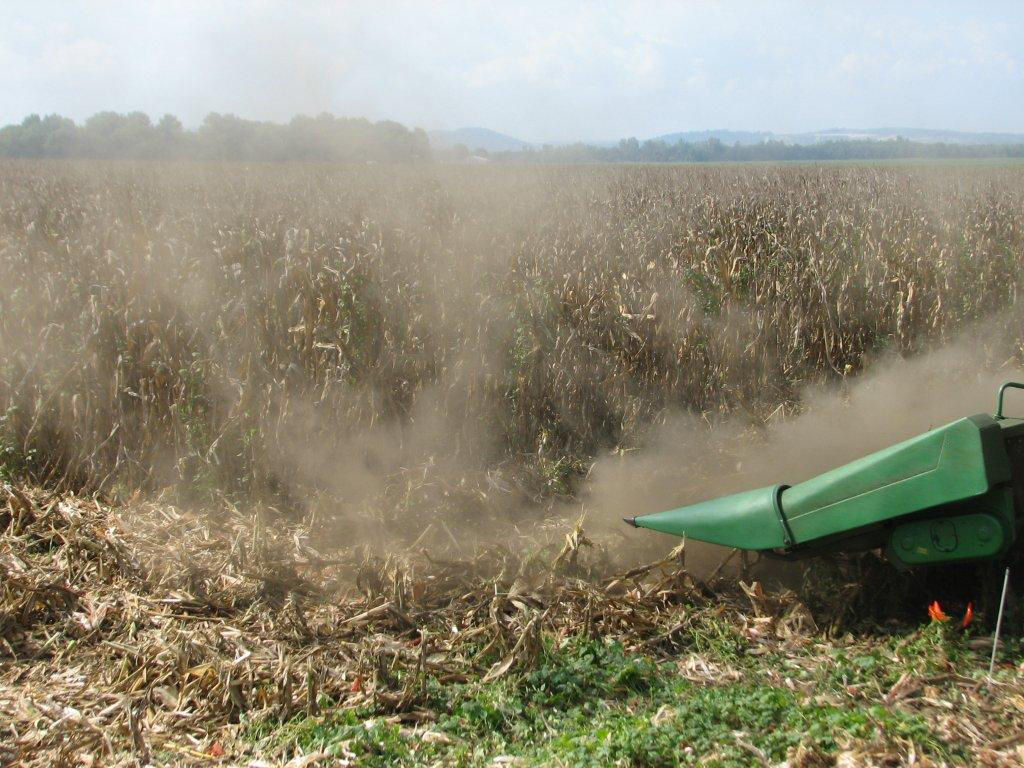What's Causing Black Dusty Corn?
October 2, 2023
While it may be very concerning to see a cloud of black dust following the combine when picking corn this year, this dust is not something that normally impacts the grain or grain quality. The black cloud is the caused by fungal spores that have formed on the dying leaves and husks. The main types of fungi causing this phenomenon are common smut (Figure 1) and several saprophytic, weak, parasitic fungi, such as Alternaria, Cladosporium, and Aureobasidium.

Plants affected by these fungi have a sooty appearance, which usually occurs when the crop is mature and wet, such as when humid weather occurs. Stressed plants may be more prone to infection by these sooty molds.

Occasionally, the sooty molds may infect the kernels, giving them a black appearance. If kernel infection is extensive, the grain should be thoroughly cleaned to remove light, damaged, and moldy kernels. Store the grain at 15% moisture content with proper air movement through the bin. Checking the grain on a regular basis is recommended.


Black dust caused by saprophytic fungi primarily annoys farmers harvesting corn and contributes to beautiful red sunsets while causing little impact on grain quality or yield. Combines may become covered with the sooty black dust, which may require additional maintenance checks. Combine operators should ensure that the engine filters are clean to prevent further issues such as overheating. While harvesting, it is recommended for anyone prone to respiratory issues to wear a dust mask as a precaution.
1211_306951
Seed Brands & Traits
Crop Protection
Disclaimer
Always read and follow pesticide label directions, insect resistance management requirements (where applicable), and grain marketing and all other stewardship practices.
©2024 Bayer Group. All rights reserved.